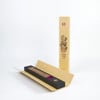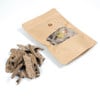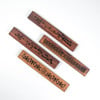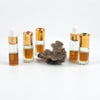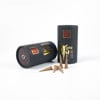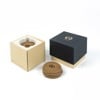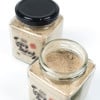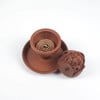What is Agarwood? Unveiling the Hidden Secrets of Agarwood
The formation of Agarwood within Aquilaria trees holds many mysteries. People said that: Agarwood is believed to be formed when the fragrance of the heavens carried by the wind responds to an injured spot on the trunkof the Aquilaria tree, blending with the resin oozing from that wound. Subsequently, it undergoes a refining process over time, influenced by good soil, sunlight, wind, the sea, and various other natural conditions. Agarwood is considered the spiritual essence of Earth and Heaven.
The Origin of Agarwood
Contrary to common misconceptions, Agarwood is not the name of a specific tree. Agarwood and Ky nam are essentially the resinous wood produced from the trunk of the Aquilaria tree, which is abundant in the ancient forests of Vietnam. The term "Agarwood tree" is a colloquial way people refer to the Aquilaria tree that yields Agarwood. Throughout its growth and development, the Aquilaria tree may face challenges such as termite infestation or damage from insects eating the trunk. Heavy rain, strong winds, or the impact of nature can create wounds on the tree. These wounds need to retain water over a rainy season for the tree to begin secreting resin around the wound, defending against external threats and diseases.
Over time, the resin gradually solidifies, emitting an alluring fragrance that attracts a rare and precious species of ant. This particular ant, characterized by its tall stature and either yellow or black color, is challenging to find. Carrying a special type of fungus within, the ant feeds on the resin of the Aquilaria tree. Inadvertently, the ant introduces fungus spores into the resin layer, initiating the formation of agarwood. The fungus interacts with the compounds in the resin, influenced by external climate conditions, and this interaction, taking place over an extended period, results in the creation of a unique essential oil, known as Agarwood. The longer the interaction, the more valuable the agarwood becomes. For Aquilaria trees that produce high-quality agarwood, the resin-filled eyes on the trunk are indicative of insect damage, referred to colloquially as "con bu xe."
Over decades to centuries, under the influence of the Earth's spiritual energy, the wood cells gradually transform into various shades of light brown, gray, mottled, and black, exhibiting different textures of softness and hardness. This transformation is attributed to the gradual alteration of the accumulated resin. Trees producing agarwood are often characterized by hardened and decayed wood, knotted trunks, insect-infested areas, areas damaged by lightning strikes, and other signs of distress. Well-aged agarwood emits a distinct and robust fragrance. Naturally occurring agarwood contains oil concentrations ranging from 25% to 80%, with the highest-quality type reaching 60% to 80%. Despite common misconceptions, not every Aquilaria tree can produce agarwood. In a natural forest, it is estimated that only 1 out of 1,000 to 1,500 Aquilaria trees may produce agarwood.
The term "Agarwood" in Chinese characters means submerged, and "Huong" translates to fragrance. The name itself broadly describes the deep, subtle scent, akin to the virtue of a gentleman—unassuming, refined, and enduring. "Ky Nam" translates to the marvels of the South, expressing the local pride in this rare and hard-to-find wood. Agarwood contains numerous Sesquiterpene compounds, a structurally unique class of substances that cannot be synthetically replicated. Natural agarwood and agarwood essential oil, extracted through steam distillation, are utilized in the production of high-quality fragrances, perfumes, and traditional medicine. For more details, you can explore the article: "8 Benefits of Agarwood for Health and Lifestyle."
Classification of Agarwood
According to Dr. Le Cong Kiet, the evaluation criteria for Agarwood often rely on its origin, shape, size, color, fragrance, weight, density, purity, and the type of Aquilaria tree that produces it. In the trading business, the classification of Agarwood largely depends on the perceptions, experiences, and mutual agreement between parties through observation, touch, burning, tasting, and smelling. Agarwood is highly diverse and is currently categorized into four main types: Ky Nam, Agarwood roots, Ant Agarwood, and Rapid Agarwood.
Ky Nam: Ky Nam, also known simply as Ky, is considered the most special and rarest type of Agarwood. The price of Ky Nam can be extremely high, reaching billions of Vietnamese dong. Ky Nam is characterized by its soft, flexible, and smooth texture. When tasted, it encompasses a harmonious blend of sour, spicy, bitter, and sweet flavors. It emits a natural fragrance with a long-lasting and straight path of green smoke.

















